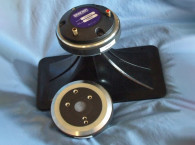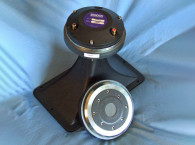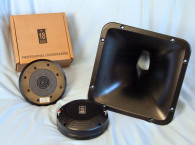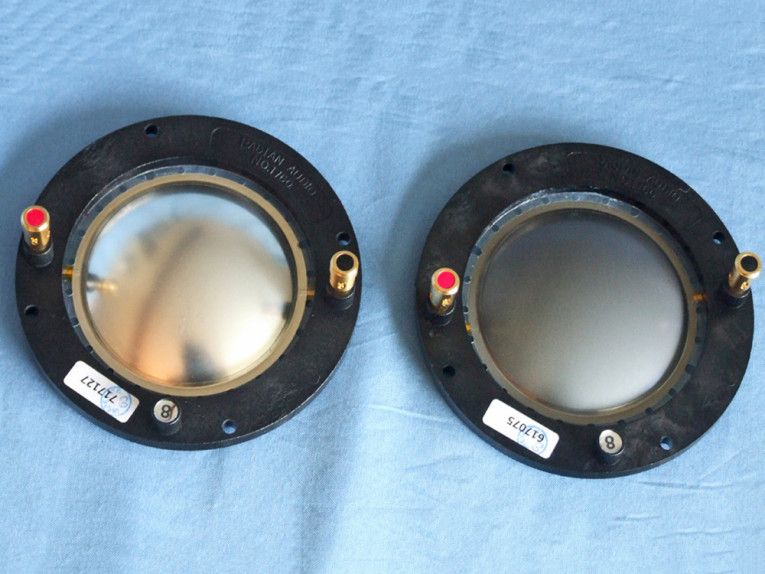
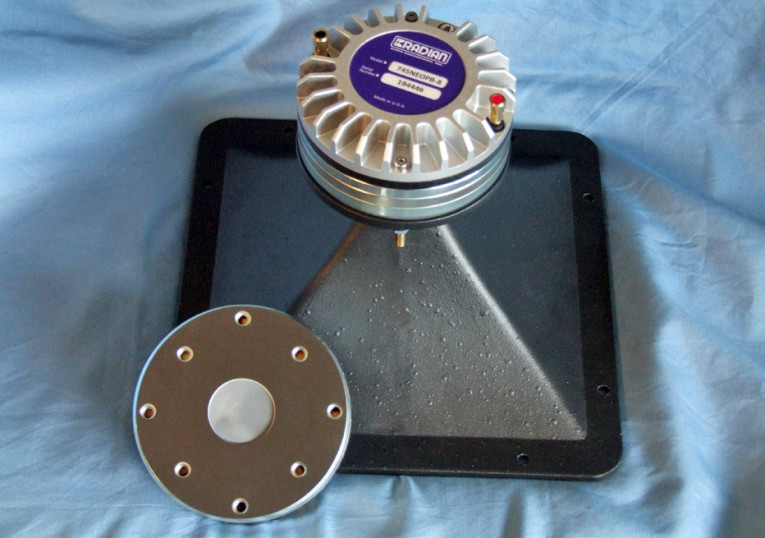

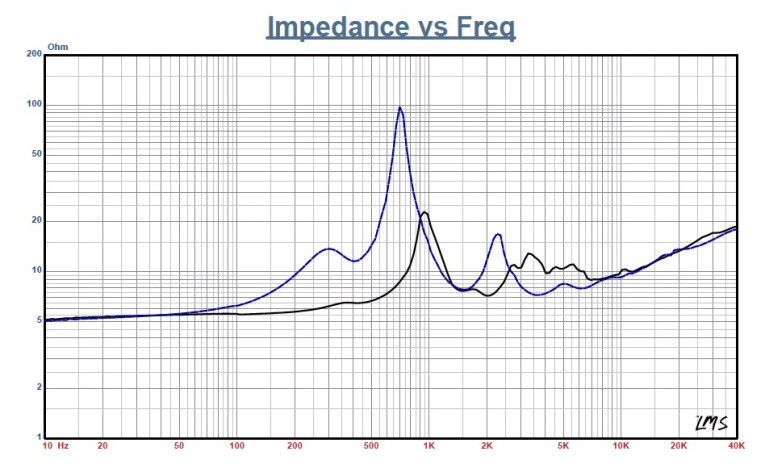
Today, Radian Audio, based in Orange, CA, is a major player in the OEM loudspeaker component business, the sound contractor/fixed installation market and the portable/tour sound industry. With more than two decades of success under its belt, Radian Audio is now entering its third decade as a pro sound manufacturer.
For month’s Test Bench review, Radian sent me one of their latest beryllium diaphragm 1.4” compression drivers, the 745NEOBe. Beryllium is an insanely expensive material, but also extremely detailed and musical sounding. (The aluminum diaphragm for the 745NEO costs about $101, while the beryllium is six times more at $601). I have developed a high end two-channel product using Scan-Speak beryllium tweeters, and the beryllium diaphragm material really does subjectively sound very musical and detailed.
The Radian Audio aluminum alloy (a proprietary mix of aluminum, titanium, and copper) diaphragms also sound absolutely amazing, which is why they have such a great reputation among recording studios and PA speaker manufacturers. Because both materials, Radian’s proprietary aluminum alloy and beryllium, are known for their musicality, Radian also sent a pair of aluminum diaphragms so that I could do an objective comparison! This you will find rather interesting.
In terms of features, the 745NEOBe has a 5 to 20 Hz frequency range, a 76.3 mm (3”) voice coil diameter wound with edge-wound copper clad aluminum wire on a high temperature polymer former, available with both structural aluminum or beryllium diaphragms (see Photo 1), a neodymium ring magnet motor structure, a heat stabilized polymer suspension that greatly reduces second- and third –order harmonic distortion, a self-aligning diaphragm assembly, 220 W continuous program power handing, 111 dB sensitivity, and gold-plated color-coded push terminals. Since Radian Audio does not manufacture horns, I used a B&C ME90 80° × 60° constant directivity cast aluminum horn (see Photo 2).
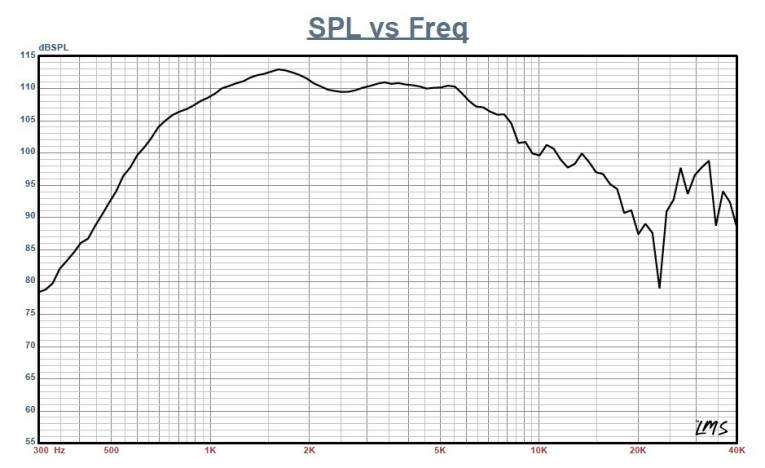


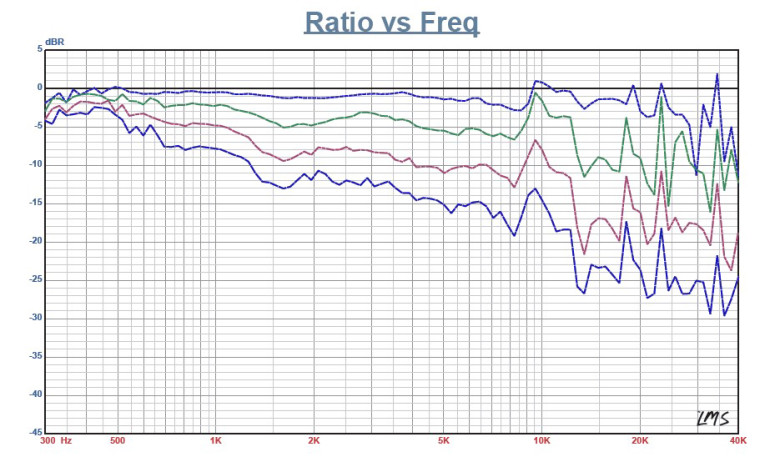
I began the driver characterization process by using the LinearX LMS analyzer to produce the 300-point sine wave impedance plot shown in Figure 1. The solid black curve represents the beryllium diaphragm 745NEOBe mounted on the ME90 horn and the dashed blue curve represents the beryllium compression driver without the horn. Figure 2 shows the impedance for both the aluminum and beryllium diaphragms without the horn (the beryllium impedance curve is solid black and the aluminum diaphragm is the dashed blue curve). With a 5.45 Ω DCR, the minimum impedance above the resonance frequency of the beryllium 745NEOBe mounted on the 80° × 60° horn was 7.1 Ω at 1.99 kHz.
For the next group of frequency response tests, I surface mounted the Radian Audio 745NEOBe and ME90 horn in free-air and measured the horizontal on- and off-axis from 0° to 60° at 2.83 V/1 m using a 100-point gated sine wave sweep. Since Radian Audio did not manufacture the horn, I didn’t bother with the vertical axis measurements. Figure 3 shows the on-axis response of the beryllium compression driver/horn combination, which is smooth ±1.75 dB with no major anomalies from 1 kHz out to 6 kHz and a declining response as frequency increases using the constant directivity horn. Figure 4 compares the on-axis response of the beryllium diaphragm to the aluminum diaphragm.


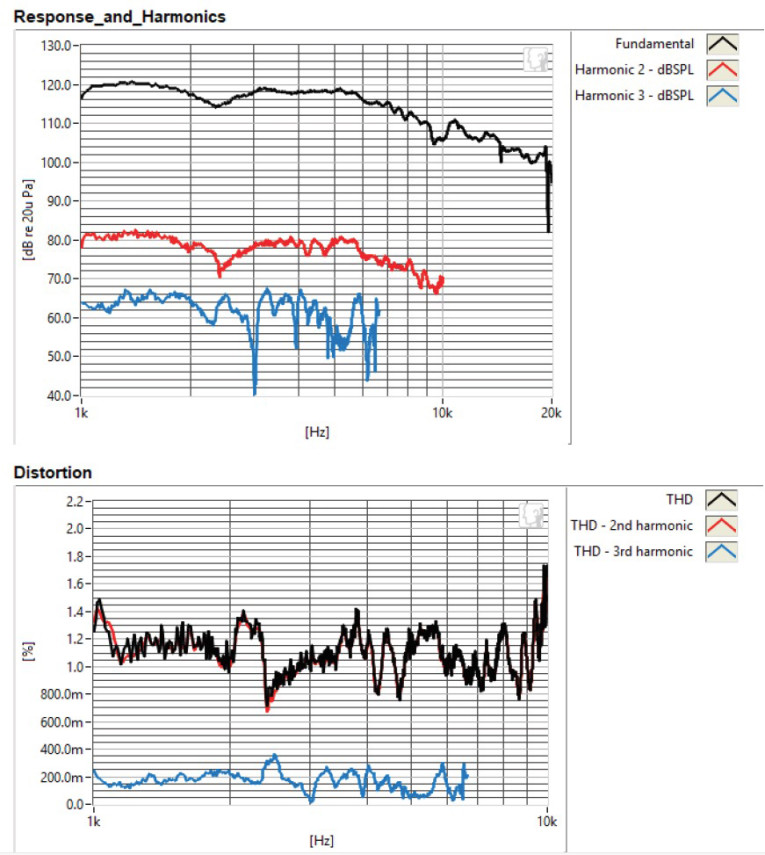

Radian Audio’s recommended minimum crossover frequency for the 745NEO is 800 Hz with a fourth-order slope. Figure 5 gives the on- and off-axis response in the horizontal plane, with the normalized version of the horizontal plane response shown in Figure 6. Figure 7 shows the CLIO polar plot. Last, Figure 8 details the two-sample SPL comparison showing the two beryllium diaphragm 745NEOBe compression driver samples to be very closely matched.
Next, I fired up the Listen, Inc., AmpConnect ISC analyzer and 0.25” SCM microphone and power supply to measure distortion and generate time-frequency plots. For the distortion measurement, I mounted the Radian Audio 745NEO and horn combination in free air on my measurement stand at the same as the frequency response measurements and set the SPL to 104 dB at 1 m (1.86 V for the beryllium diaphragm and 1.52 V for the aluminum diaphragm as determined by using a pink noise stimulus and internal SLM in the SoundCheck 15 software). Then, I measured the distortion with the Listen microphone placed 10 cm from the mouth of the horn. This produced the distortion curves for the beryllium diaphragm (see Figure 9) and for the aluminum diaphragm (see Figure 10), both exhibiting extremely low third-harmonic distortion.
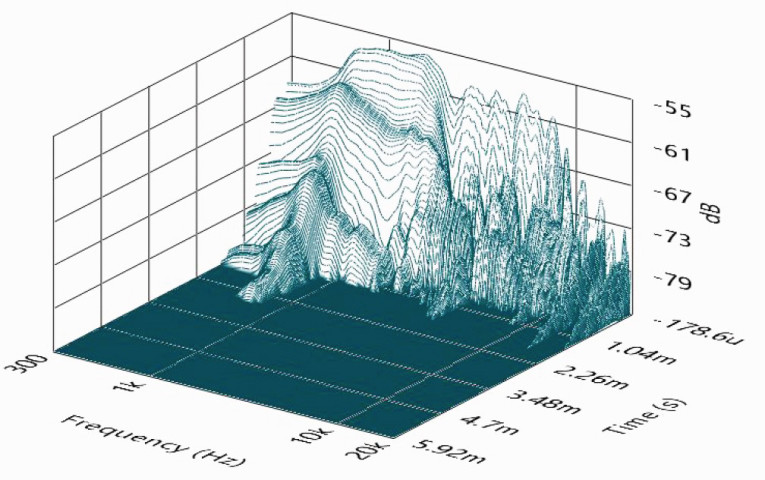
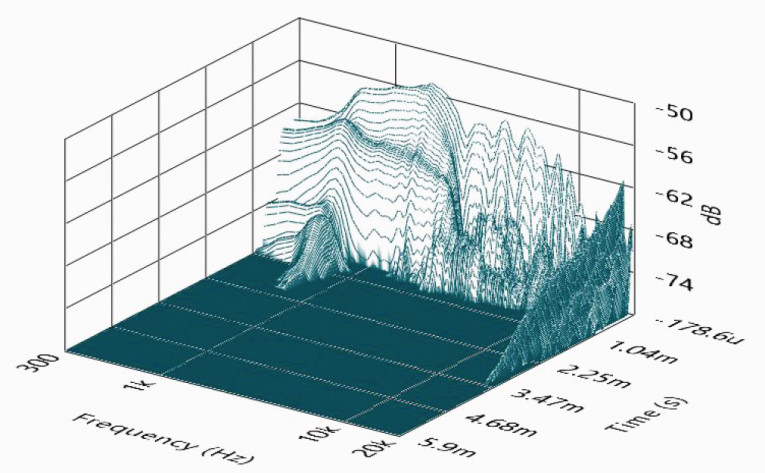
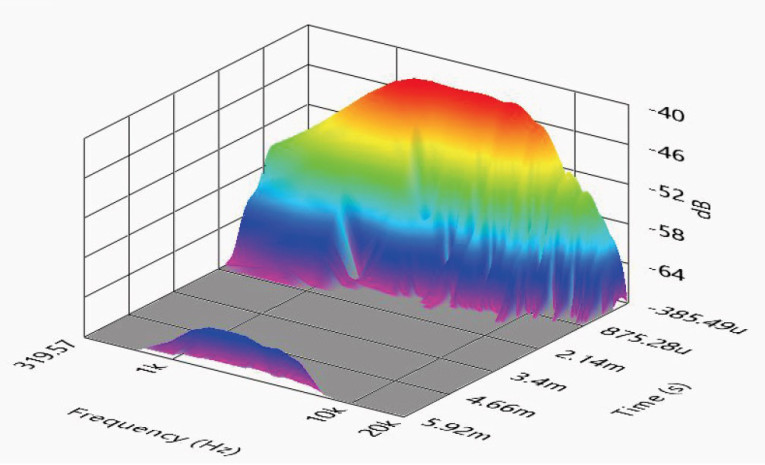
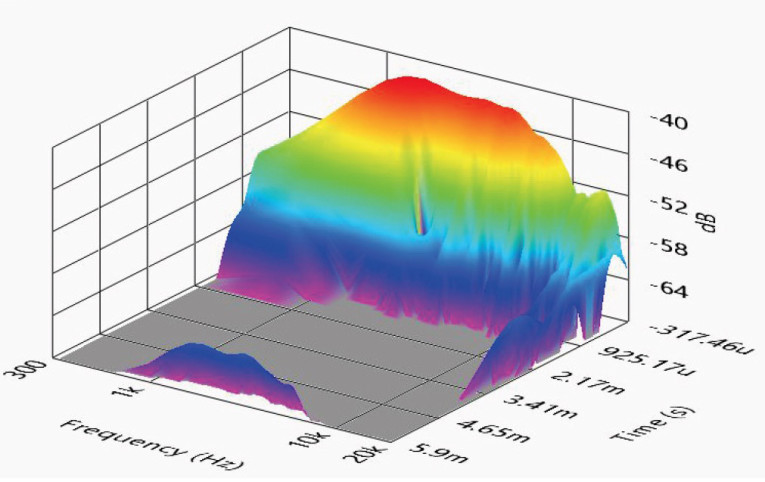
I set up SoundCheck 15 to generate a 2.83 V/1 m impulse response curve and imported the data into Listen’s SoundMap Time/Frequency software. The resulting cumulative spectral decay (CSD) waterfall plot is given for the beryllium diaphragm (see Figure 11) and for the aluminum diaphragm (see Figure 12). For the Short Time Fourier Transform (STFT) with the color-coded surface plot, Figure 13 shows the results for the beryllium diaphragm and Figure 14 shows the results for the aluminum diaphragm.
The measurement differences between the 745NEO with the beryllium diaphragm and the aluminum diaphragm are interesting. You can see the aluminum break up mode, but its decay is impressively quick in the midband, while the beryllium is rather smooth throughout its entire range. Both materials used in the 745NEO compression driver have a very good reputation among recording engineers and producers, so it’s hard to definitively say one material is superior to the other from objective information. That decision is strictly a subjective one. Certainly the build quality and performance of Radian Audio Engineering 745NEOBe compression driver is impressive for either diaphragm.
For more information, visit the Radian Audio website at www.radianaudio.com
This article was originally published in Voice Coil, October 2017.





